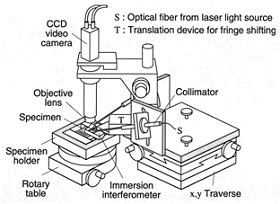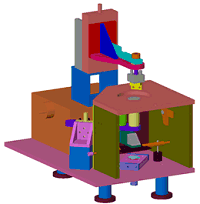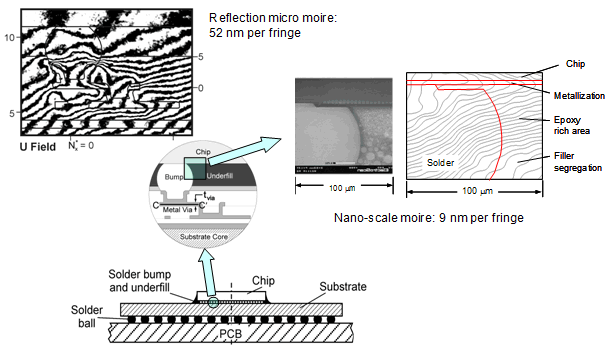Special considerations arise for deformation measurements of tiny specimens or tiny regions of larger specimens. The relative displacements within a small field of view will be small (even if the strains are not small), so the number of moiré fringes might not be enough for an accurate analysis. Perhaps the most important consideration, therefore, is the need for increased displacement sensitivity–enhanced sensitivity beyond the high sensitivity discussed above.
In a method called microscopic moiré interferometry, sensitivity is increased progressively by two techniques. The first is an immersion interferometer, whereby the virtual reference grating is formed inside a medium of higher index of refraction; this strategy reduces the wavelength of the light and thus increases the upper limit of frequency for the virtual reference grating. Virtual reference gratings of 4800 lines/mm (122,000 lines/in.) are produced in practice, thus doubling the usual basic sensitivity. The second technique is optical/digital fringe multiplication (O/DFM), whereby fringe shifting and an efficient algorithm is used to generate an enhanced contour map of the displacement field; the map displays times as many fringe contours as the original moiré pattern. In practice, = 12 has been achieved for microscopic moiré interferometry, which with the doubled sensitivity, represents a multiplication of 24 (a contour interval of 17 nm).



